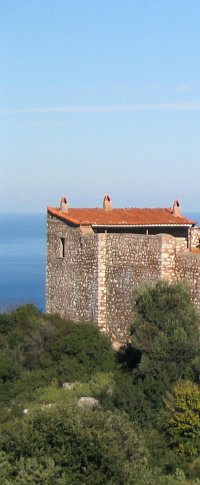
HISTORY
A land where history is lost in the mists of time. The story told by the ancient Greeks was that the islands were created when, once upon a time, Zeus and Poseidon quarrelled over who would be master of the winged horses. Poseidon, angered at his defeat, smote the ground with his trident and splintered it into many pieces. That is how the islands were formed.
It is quite likely that the island was already inhabited in the Neolithic period. The ancient name was Peparithos, which it took from the city founded by Stafilos’ brother. According to certain scholars, the name Peparithos refers to the ancient Greek verb pepaino, which means, “to mature”. That is, the island is a place that lends itself to the maturing of fruits and, in particular, of grapes from which the famous wine of antiquity, the peparithios oinos, was produced. The colonisation of the island by Cretans around 1600 B.C. is, in any case, a fact and is connected to the legendary King Stafilos. According to the myth, Stafilos was the son of Ariadne, daughter of the mythical King Minos of Crete and Dionysus, the god of fertility, fruitfulness, vineyards and wine. Minoans from Crete settled on Skopelos. In the south east of the island, important remains from the Mycenaean period have been found; a tomb from the same area is believed to be that of Stafilos himself (archaeological museum of Volos).
After 479 B.C., Skopelos came under Athenian rule and ceased to be an independent state. After the battle of Chaironia, the island was passed to the Macedonians and became a small part of the Empire of Alexander the Great. This rule lasted until 146 B.C. when the Romans conquered the whole of Greece. The division of the Roman Empire into eastern and western parts in 330 A.D. brought the island under Byzantine rule. In the 4th century A.D. the inhabitants of the island were already Christians and Skopelos had become the seat of a bishop. At this time, the Bishop Reginos became a dominant historic figure, who contributed greatly to the conversion of inhabitants of the Northern Sporades to Christianity. According to legend, Reginos pursued a fierce dragon, which was slowly eating the islanders one by one, forcing it to fall with a great crash into the sea, where it disappeared. At the rocky and precipitous site of the dragon’s plunge, a great crevice was formed, giving the place its name of “Dracontoschisma” (Dragon’s cleft), on the southern coast of the island, between Stafilos and Agnontas. Reginos became a Saint after his death and is today the patron Saint of Skopelos Island.
Until 1204 the island served as a place of exile, when it was occupied by the Venetians. In 1538 A.D. the Algerian Pirate Barbarosa came to the island and slaughtered the inhabitants. Around the year 1600 AD, those who had been saved and had found sheltered on Evia and Thessaly returned to the island.
During the revolution of 1821-1826, the ships of Skopelos helped the revolutionaries in Halkidiki, Magnisias and Evia and when, the revolution failed, 70.000 refugees escaped to Skopelos, amongst them Diamandis Nikolau, known as Olympios Skopelos finally entered the Greek government in 1830.
In World War II, the island was occupied first by the Italians and then
the Germans. During the Civil War of 1946, many members of the community
who fought against the Italians and Germans were forced to leave. The
population of the island was further reduced by migration to American,
Australia and the mainland.
Since 1980, with the development of tourism, together with fishing and
stockbreeding, the young people have been helped to stay on the island
and many others to return home from Athens and abroad, especially during
the summer months.